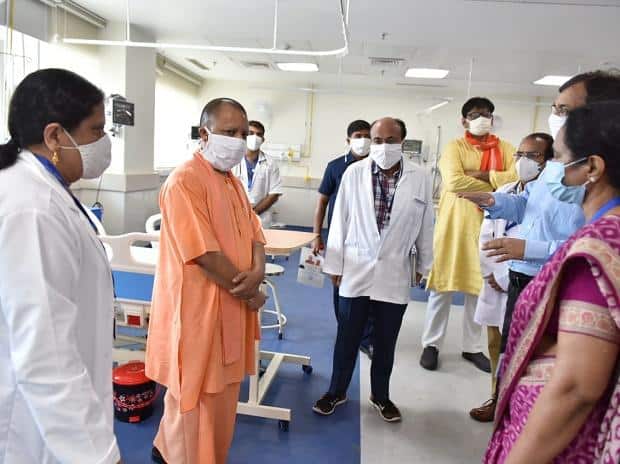96.6% efficacy with one dose of COVID-19 vaccine, says ICMR
One dose of COVID-19 vaccine ensures 96.6% efficiency in preventing death while a double dose ensures 97.5% efficiency against death, said ICMR Director General Dr Balram Bhargava. Analysis of data collected between April 18th and August 15th showed that most deaths during the second wave occurred amongst the unvaccinated. Dr Bhargava also informed that protection against death is available for all age groups.
Health ministry officials say pace of vaccination is steadily increasing. Average doses per day has increased from 20 lakh in May to 78 lakh in September with 86 lakh doses administered on September 9th. Small states and UTs like Dadra and Nagar Haveli, Sikkim and Himachal have reported 100% vaccination with one dose.
At present, close to 69% of overall cases are being reported from Kerala.
Source: India Today
104 cities with clean air in 2020: Union Environment Minister
Addressing an event on the occasion of International Clean Air Day on September 7th, Union Environment Minister Bhupender Yadav said 104 cities have witnessed improved air quality compared to 86 in 2018. In a written reply in Parliament, the government, however admitted that the drop in air pollution levels across the cities was a temporary one, largely due to the national lockdown. As per its National Clean Air Programme, the government aims to reduce PM 10 and PM 2.5 pollutants by almost 20 to 30% in 122 cities by 2024.
Source: The Hindu
Read more: Measuring air pollution: An illustrated guide to all those terms you keep hearing
Ministry of Education releases NIRF rankings, IIT Madras on top
IIT Madras was declared as the top college in the overall category in the National Institute of Ranking Framework (NIRF) released by Union Education Minister Dharmendra Pradhan on September 9th. The next two spots were taken by IISc Bangalore and IIT Bombay. Apart from overall rankings, NIRF also highlighted best college, best medical school, top universities, best MBA institute, and engineering college and law and pharmacy institution among others.
Delhi’s Miranda House and Lady Shri Ram College for Women attained first and second spots under the college category. Among universities, IISc Bangalore ranked first followed by JNU.
In the new category of research announced this year, IISc Bangalore took the top spot followed by IIT Madras. IIM Ahmedabad attained was ranked first among management colleges. National Law School of India University Bangalore emerged as the top university among law schools and AIIMS New Delhi was declared the best medical college in the country.
This is the sixth edition of NIRF which ranks institutes of higher education on the basis of five parameters and in 11 different categories. More than 6000 institutes participated in this year’s NIRF exercise.
Source: The Times of India
New study highlights three new heatwave hotspots
The country’s central, northwest and south-central regions have become the new hotspots of intense heatwaves in the last 50 years, says a new study published in the International Journal of Climatology. The study noted an increasing trend of heatwaves in these three regions, with the highest occurrence in western Madhya Pradesh. However, a decreasing trend has been observed in the Gangetic plains of West Bengal.
The study noted the expansion of heatwave phenomenon towards the south and observed the direct link between heat waves and mortality in Odisha and Andhra Pradesh. The impact of heatwaves can be deadly and irreversible on human life, ecology, agriculture, health and infrastructure.
Source: Firstpost
Read more: Why Chennai needs to put its ‘heat action plan’ to practice right away
Vector-borne Dengue and Scrub Typhus kills more than 100 people in UP

Being called the “mystery” fever, vector-borne infections of Dengue and Scrub Typhus have claimed more than 100 lives in UP. Doctors have had a hard time in recognizing the virus types. Dengue is caused by a virus whereas Scrub Typhus is a bacterial infection caused due to bites from chiggers, or larval mites, found in bushes. The first cases were reported on August 18th in Firozabad. The district has so far reported 51 deaths of which 40 are children.
Waterlogging and lack of sanitation and hygiene are being cited as major reasons behind the outbreak. The infection has now spread to five districts including Agra where thousands of tourists are visiting the Taj Mahal each day. Officials are now going door to door to make people aware of the outbreak and promote hygienic practices.
Source: CBS News
Compiled by Rishabh Shrivastava